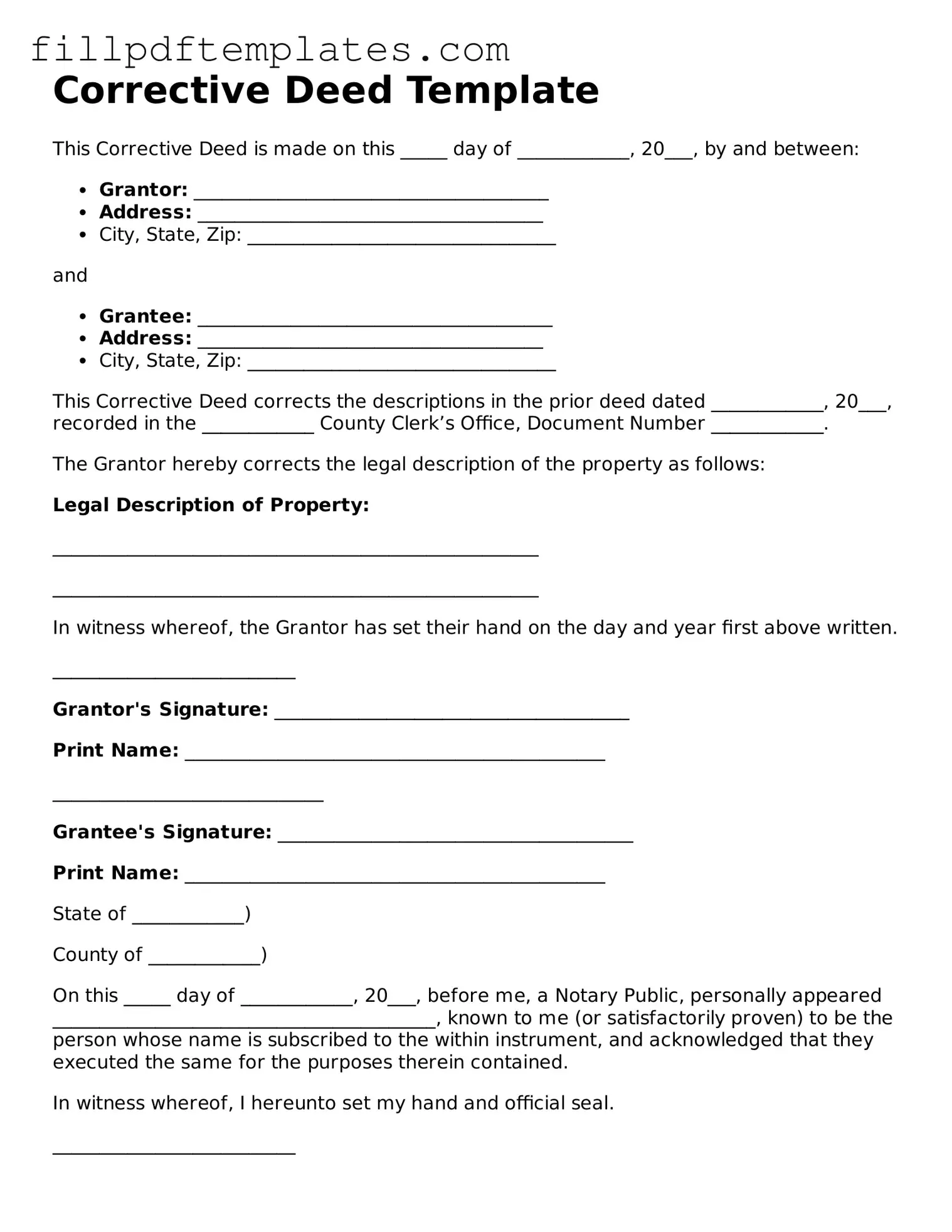Corrective Deed Template
This Corrective Deed is made on this _____ day of ____________, 20___, by and between:
- Grantor: ______________________________________
- Address: _____________________________________
- City, State, Zip: _________________________________
and
- Grantee: ______________________________________
- Address: _____________________________________
- City, State, Zip: _________________________________
This Corrective Deed corrects the descriptions in the prior deed dated ____________, 20___, recorded in the ____________ County Clerk’s Office, Document Number ____________.
The Grantor hereby corrects the legal description of the property as follows:
Legal Description of Property:
____________________________________________________
____________________________________________________
In witness whereof, the Grantor has set their hand on the day and year first above written.
__________________________
Grantor's Signature: ______________________________________
Print Name: _____________________________________________
_____________________________
Grantee's Signature: ______________________________________
Print Name: _____________________________________________
State of ____________)
County of ____________)
On this _____ day of ____________, 20___, before me, a Notary Public, personally appeared _________________________________________, known to me (or satisfactorily proven) to be the person whose name is subscribed to the within instrument, and acknowledged that they executed the same for the purposes therein contained.
In witness whereof, I hereunto set my hand and official seal.
__________________________
Notary Public: ___________________________________________
My Commission Expires: ___________________________________
